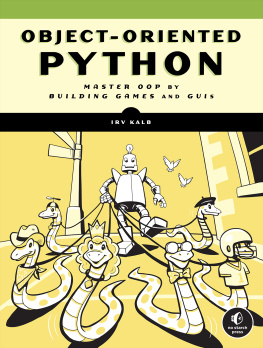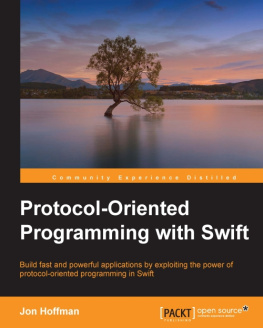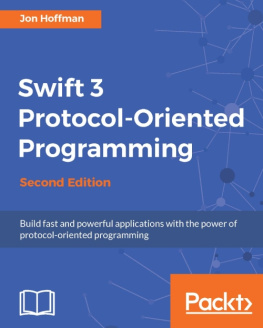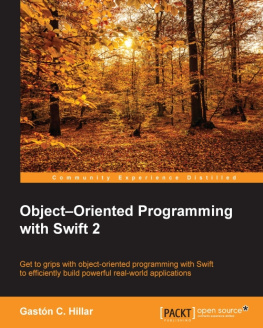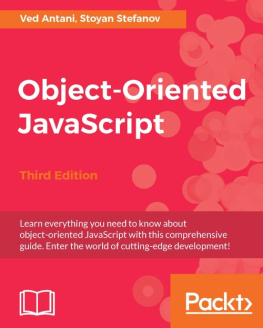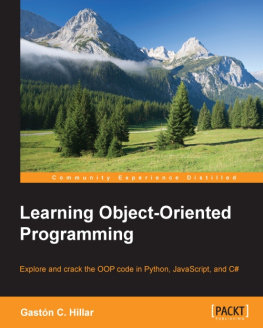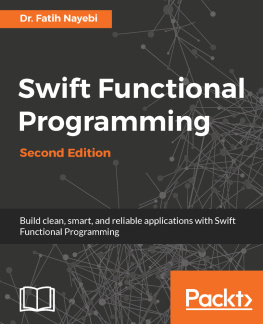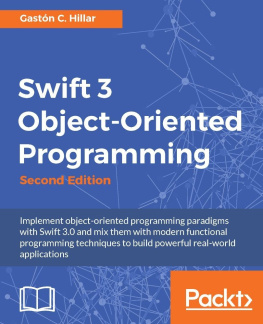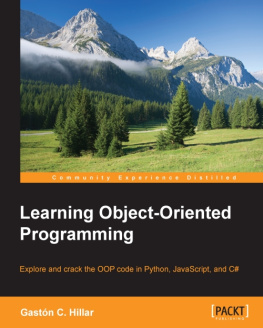Gastón C. Hillar [Gastón C. Hillar] - Object–Oriented Programming with Swift 2
Here you can read online Gastón C. Hillar [Gastón C. Hillar] - Object–Oriented Programming with Swift 2 full text of the book (entire story) in english for free. Download pdf and epub, get meaning, cover and reviews about this ebook. year: 2016, publisher: Packt Publishing, genre: Home and family. Description of the work, (preface) as well as reviews are available. Best literature library LitArk.com created for fans of good reading and offers a wide selection of genres:
Romance novel
Science fiction
Adventure
Detective
Science
History
Home and family
Prose
Art
Politics
Computer
Non-fiction
Religion
Business
Children
Humor
Choose a favorite category and find really read worthwhile books. Enjoy immersion in the world of imagination, feel the emotions of the characters or learn something new for yourself, make an fascinating discovery.
- Book:Object–Oriented Programming with Swift 2
- Author:
- Publisher:Packt Publishing
- Genre:
- Year:2016
- Rating:5 / 5
- Favourites:Add to favourites
- Your mark:
Object–Oriented Programming with Swift 2: summary, description and annotation
We offer to read an annotation, description, summary or preface (depends on what the author of the book "Object–Oriented Programming with Swift 2" wrote himself). If you haven't found the necessary information about the book — write in the comments, we will try to find it.
Get to grips with object-oriented programming in Swift to efficiently build powerful real-world applications
About This Book
- Leverage the most efficient object-oriented design patterns in your Swift applications
- Write robust, safer, and better code using the blueprints that generate objects
- Build a platform with object-oriented code by using real-world elements and represent them in your app
Who This Book Is For
If you are an iOS developer who has a basic idea of object-oriented programming and want to incorporate its concepts with Swift to optimize your applications code and create reusable and easily to understand building blocks, then this book is for you. This is a very useful resource for developers who want to shift from Objective C, C#, Java, Python, JavaScript, or other object-oriented languages to Swift
What You Will Learn
- Build solid, stable, and reliable applications using Swift
- Work with encapsulation, abstraction, and polymorphism using Swift 2.0
- Customize constructors and destructors based on your needs
- Develop Swift 2.0 with classes, instances, properties, and methods
- Take advantage of generic code to maximize code reuse and generalize behaviors
- Use state of inheritance, specialization, and the possibility to overload members
- Write high quality object-oriented code to build apps for iOS or Mac OS X
In Detail
Object-Oriented Programming (OOP) is a programming paradigm based on the concept of objects; these are data structures that contain data in the form of fields, often known as attributes and code. Objects are everywhere, and so it is very important to recognize elements, known as objects, from real-world situations and know how they can easily be translated into object-oriented code.
Object-Oriented Programming with Swift is an easy-to-follow guide packed full of hands-on examples of solutions to common problems encountered with object-oriented code in Swift. It starts by helping you to recognize objects using real-life scenarios and demonstrates how working with them makes it simpler to write code that is easy to understand and reuse.
You will learn to protect and hide data with the data encapsulation features of Swift. Then, you will explore how to maximize code reuse by writing code capable of working with objects of different types. After that, youll discover the power of parametric polymorphism and will combine generic code with inheritance and multiple inheritance. Later, you move on to refactoring your existing code and organizing your source for easy maintenance and extensions.
By the end of the book, you will be able to create better, stronger, and more reusable code, which will help you build better applications.
Style and approach
This simple guide is packed with practical examples of solutions to common problems. Each chapter includes exercises and the possibility for you to test your progress by answering questions.
Downloading the example code for this book. You can download the example code files for all Packt books you have purchased from your account at http://www.PacktPub.com. If you purchased this book elsewhere, you can visit http://www.PacktPub.com/support and register to have the code file.
GastГіn C. Hillar [GastГіn C. Hillar]: author's other books
Who wrote Object–Oriented Programming with Swift 2? Find out the surname, the name of the author of the book and a list of all author's works by series.

![Gastón C. Hillar [Gastón C. Hillar] Object–Oriented Programming with Swift 2](/uploads/posts/book/119341/thumbs/gastg-n-c-hillar-gastg-n-c-hillar.jpg)
